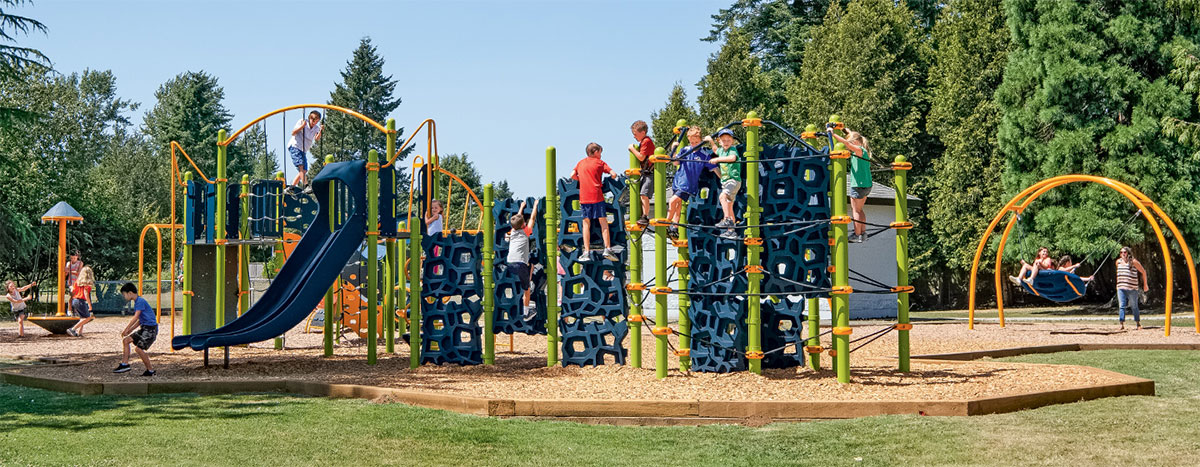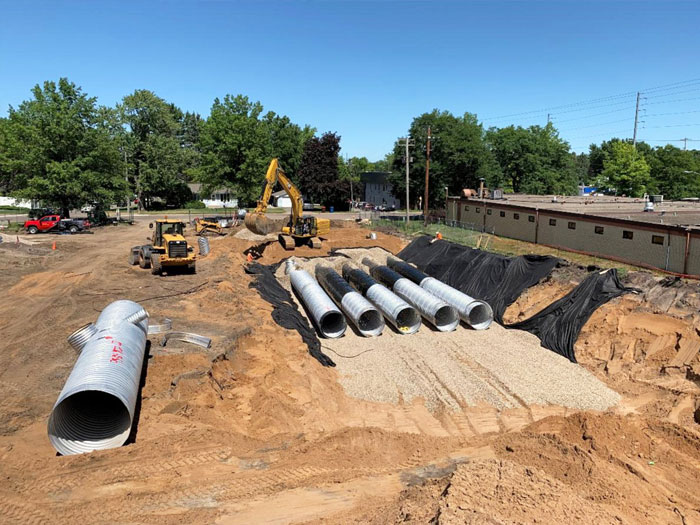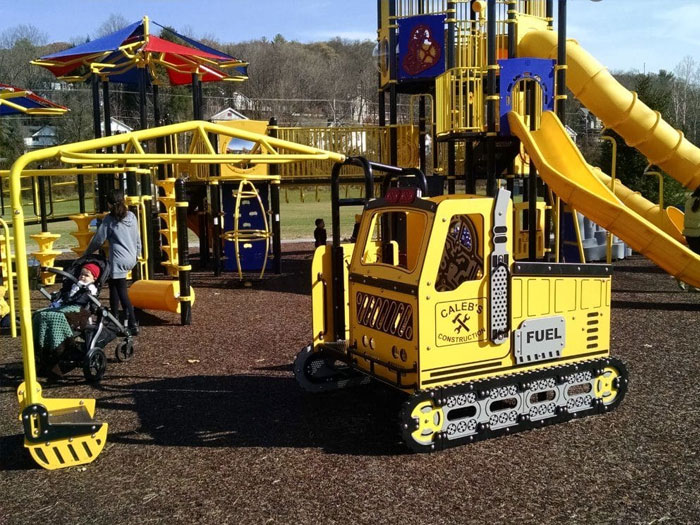
The playground construction is a multifaceted process that requires thoughtful planning, precise execution, and ongoing maintenance. From initial site selection to the installation of equipment and safety measures, each step plays a crucial role in creating a safe and enjoyable space for children to play and explore.
Playground construction planning steps
Building a playground involves several important steps to ensure safety, functionality, and enjoyment for its users. Here’s a comprehensive guide to help you plan the construction of a playground:
- Assessment and Research:
- Identify the location for the playground.
- Conduct a needs assessment to determine the community’s requirements and preferences.
- Research safety guidelines and regulations, including those provided by organizations such as the Consumer Product Safety Commission (CPSC) and ASTM International.
- Budgeting and Funding:
- Determine the budget for the project, including costs for equipment, materials, labor, and any additional amenities.
- Explore funding options, such as grants, sponsorships, donations, or community fundraising efforts.
- Design and Layout:
- Collaborate with designers, architects, and landscape professionals to create a suitable playground design.
- Consider factors such as age range, accessibility, theme, equipment types, and safety features.
- Ensure the design complies with safety standards and ADA (Americans with Disabilities Act) accessibility guidelines.
- Permitting and Approvals:
- Obtain necessary permits and approvals from local authorities, including zoning permits, building permits, and compliance with safety regulations.
- Consult with relevant stakeholders, such as city planners, parks departments, and neighborhood associations, to ensure compliance and community support.
- Procurement of Equipment and Materials:
- Source playground equipment and materials from reputable suppliers or manufacturers.
- Consider factors such as durability, maintenance requirements, and compliance with safety standards.
- Ensure that all equipment and materials meet safety standards and are age-appropriate for the intended users.
- Site Preparation:
- Prepare the site by clearing vegetation, leveling the ground, and addressing any drainage issues.
- Install safety surfacing, such as mulch, rubber tiles, or synthetic turf, to cushion falls and reduce the risk of injuries.
- Construction and Installation:
- Hire experienced contractors or construction crews to assemble and install the playground equipment according to the manufacturer’s instructions.
- Ensure proper anchoring and safety measures are in place during installation.
- Conduct regular inspections to verify that construction meets safety standards and quality expectations.
- Safety Inspections and Certification:
- Schedule safety inspections by qualified professionals to assess compliance with safety standards and regulations.
- Address any issues or deficiencies identified during the inspection process.
- Obtain certification or approval from relevant authorities once the playground meets all safety requirements.
- Grand Opening and Maintenance:
- Plan a grand opening event to celebrate the completion of the playground and encourage community engagement.
- Develop a maintenance plan to ensure the playground remains safe, clean, and attractive over time.
- Regularly inspect equipment, repair any damages, replenish safety surfacing, and address maintenance needs promptly.
Read more: Tennis court construction with geosynthetics
Different types of playgrounds
Playgrounds come in various types, each designed to cater to different age groups, interests, and abilities. Here are some common types of playgrounds:
- Traditional Playground:
- Traditional playgrounds feature classic equipment such as swings, slides, climbing structures, and monkey bars.
- They are typically designed for children of all ages and offer a range of activities to promote physical and social development.
- Toddler Playground:
- Toddler playgrounds are specifically designed for younger children, usually aged 2 to 5 years old.
- Equipment in toddler playgrounds is scaled down and includes features like low slides, crawl tunnels, gentle swings, and interactive panels.
- Safety features such as soft surfaces and fencing are often included to protect young children.
- Adventure Playground:
- Adventure playgrounds focus on promoting imaginative and exploratory play.
- They often incorporate natural elements such as logs, boulders, and sand pits, along with unconventional structures like treehouses, rope bridges, and balancing beams.
- Adventure playgrounds encourage children to engage in unstructured play and creative problem-solving.
- Inclusive Playground:
- Inclusive playgrounds are designed to accommodate children of all abilities, including those with disabilities.
- Features such as wheelchair-accessible ramps, sensory panels, inclusive swings, and ground-level play elements ensure that all children can participate and enjoy the playground together.
- Nature Playground:
- Nature playgrounds emphasize natural materials and elements to create a more organic play environment.
- They often include features like wooden play structures, water features, natural climbing elements like rocks and logs, and native plants.
- Nature playgrounds promote sensory experiences, environmental awareness, and a connection to the natural world.
- Fitness Playground:
- Fitness playgrounds are designed to promote physical activity and exercise for both children and adults.
- They feature equipment such as outdoor gyms, exercise stations, obstacle courses, and fitness trails.
- Fitness playgrounds encourage users to engage in cardiovascular exercise, strength training, flexibility, and balance activities in a fun and outdoor setting.
- Water Playground (Splash Pad):
- Water playgrounds, also known as splash pads, feature interactive water features and jets that spray, mist, or cascade water for children to play in.
- They are typically designed for hot weather and offer a safe and refreshing way for children to cool off and have fun.
- Splash pads often include features like water tunnels, fountains, dumping buckets, and water cannons.
- Theme Playground:
- Theme playgrounds are designed around a specific theme or concept, such as a pirate ship, castle, space station, or jungle safari.
- They incorporate themed play structures, decorations, and landscaping to create an immersive and imaginative play experience.
- Theme playgrounds can be tailored to specific age groups or interests and often feature themed signage and storytelling elements.
What are the types of playground equipment?
Playground equipment comes in various forms and serves different purposes to provide children with opportunities for physical activity, imaginative play, and social interaction. Here are some common types of playground equipment:
- Swings:
- Swings are a classic playground staple and come in various styles, including traditional belt swings, bucket swings for toddlers, tire swings, and hammock swings.
- They promote gross motor skills, balance, coordination, and social interaction.
- Slides:
- Slides come in different heights and configurations, ranging from small toddler slides to towering spiral slides.
- They provide opportunities for climbing, sliding, and sensory experiences while promoting balance, spatial awareness, and vestibular development.
- Climbing Structures:
- Climbing structures include platforms, ladders, nets, ropes, and rock walls designed for children to climb, balance, and explore.
- They promote upper body strength, coordination, problem-solving skills, and risk-taking in a controlled environment.
- Playhouses and Forts:
- Playhouses, forts, and towers provide children with imaginative play opportunities and serve as gathering spaces for social interaction.
- They may include features like windows, doors, tunnels, bridges, and lookout points.
- Spinner Bowls and Merry-Go-Rounds:
- Spinner bowls and merry-go-rounds are rotating platforms that children can stand or sit on while spinning.
- They promote vestibular stimulation, balance, coordination, and teamwork.
- Spring Riders:
- Spring riders are animal-shaped or themed seats mounted on springs that bounce and sway when children ride them.
- They provide sensory stimulation, balance practice, and imaginative play.
- Seesaws and Teeter-Totters:
- Seesaws and teeter-totters consist of a long plank or beam balanced on a central pivot point, allowing children to ride up and down.
- They promote cooperative play, coordination, and balance.
- Monkey Bars:
- Monkey bars consist of horizontal bars suspended at varying heights for children to hang, swing, and traverse across.
- They develop upper body strength, grip strength, coordination, and spatial awareness.
- Spring Rockers:
- Spring rockers are animal-shaped or themed seats mounted on springs that rock back and forth.
- They provide sensory stimulation, balance practice, and imaginative play.
- Sandboxes and Water Play:
- Sandboxes and water play areas encourage sensory exploration, creativity, and cooperative play.
- They may include features like buckets, shovels, sieves, water pumps, and sandcastle molds.
- Balance Beams and Stepping Stones:
- Balance beams and stepping stones challenge children to navigate across narrow pathways at varying heights.
- They promote balance, coordination, and proprioception.
- Fitness Equipment:
- Fitness equipment such as climbing walls, chin-up bars, and exercise stations promote physical activity, strength, and endurance.
Read more: Road construction using geocells
How long does it take to build a playground?
The time it takes to build a playground can vary greatly depending on several factors, but here’s a general guideline:
Construction time:
- Minimum: 2 weeks (for a simple playground)
- Average: 3-7 weeks (for a more complex playground)
- Large projects: Up to several months
Factors affecting build time:
- Playground size and complexity: More equipment and features translate to longer build time.
- Budget: More budget allows for faster build by allocating more resources.
- Permits and approvals: Obtaining necessary permits can add lead time.
- Weather conditions: Construction may be slower in extreme weather (e.g., rain, snow).
- Site preparation: Existing site conditions (e.g., uneven ground, existing structures) can require additional work.
Beyond construction:
Don’t forget to factor in pre-construction activities like:
- Planning and design: Determining what you want in the playground.
- Fundraising: Securing funding for materials and labor.
- Permits and approvals: Obtaining necessary permits for construction.
These can add weeks or even months to the overall timeline.
How to maintain a playground?
Maintaining a playground is crucial for ensuring the safety, functionality, and longevity of the equipment. Here are some essential steps for maintaining a playground:
- Regular Inspections:
- Conduct routine inspections of the playground equipment, surfaces, and surrounding areas.
- Check for signs of wear and tear, damage, loose or broken parts, sharp edges, protruding hardware, and potential hazards.
- Inspect safety surfacing such as mulch, rubber tiles, or synthetic turf for proper cushioning and integrity.
- Cleaning and Sanitizing:
- Regularly clean and sanitize playground equipment, surfaces, and amenities to remove dirt, debris, germs, and other contaminants.
- Use mild soap, water, and non-toxic disinfectants suitable for outdoor use.
- Pay special attention to high-touch areas like handrails, slides, swings, and seating areas.
- Repair and Maintenance:
- Promptly repair or replace any damaged, worn out, or malfunctioning playground equipment, components, or surfacing.
- Tighten loose bolts, screws, and fasteners.
- Lubricate moving parts such as hinges, chains, and bearings to ensure smooth operation.
- Replace broken or missing parts, including chains, swings seats, ropes, and hardware.
- Surface Maintenance:
- Maintain safety surfacing such as mulch, rubber tiles, or synthetic turf to ensure adequate impact absorption and fall protection.
- Regularly rake and redistribute loose-fill surfacing materials like wood chips or mulch to maintain even coverage and depth.
- Repair damaged or compacted surfacing materials to prevent tripping hazards and minimize the risk of injuries.
- Vegetation Management:
- Trim and prune vegetation surrounding the playground to maintain clear sightlines, visibility, and access pathways.
- Remove overhanging branches, thorny plants, poison ivy, and other hazards that may pose a risk to children.
- Control weeds, grass, and invasive plants growing within the playground area to prevent tripping hazards and maintain cleanliness.
- Seasonal Maintenance:
- Conduct seasonal maintenance tasks such as inspecting and cleaning gutters, drains, and downspouts to prevent water accumulation and drainage issues.
- Winterize playground equipment and amenities to protect them from cold temperatures, snow, ice, and frost damage.
- Remove snow, ice, and debris from pathways, equipment, and play surfaces to ensure safe access and usability.
- Safety Upgrades and Modifications:
- Stay informed about safety standards, guidelines, and regulations relevant to playground equipment and design.
- Consider upgrading or retrofitting older playground equipment to meet current safety standards and accessibility requirements.
- Implement safety enhancements such as adding barriers, guardrails, signage, and shade structures to improve overall safety and usability.
- Community Engagement and Feedback:
- Encourage community members, parents, caregivers, and children to report any maintenance concerns, hazards, or issues they observe.
- Solicit feedback and suggestions for improving the playground environment, amenities, and features to better meet the needs and preferences of users.
The application of geomembranes in playgrounds
Geosynthetic products like geomembranes, which are synthetic liners or barriers used to control fluid migration in various engineering applications, can indeed find several applications in playground construction. Here are some ways geomembrane sheets can be utilized in playgrounds:
- Ground Stabilization:
- Geomembranes can be used to stabilize the ground beneath playground equipment, particularly in areas with soft or unstable soil conditions. By installing a geomembrane liner beneath the playground surface, you can prevent erosion, soil displacement, and sinking, ensuring a stable and level play area.
- Impact Absorption:
- Geomembranes can serve as a layer of cushioning or impact absorption beneath safety surfacing materials such as rubber mulch, wood chips, or synthetic turf. By installing a geomembrane liner beneath the safety surface, you can enhance its shock-absorbing properties and reduce the risk of injuries from falls.
- Waterproofing:
- Geomembranes can be used to waterproof areas of the playground prone to water accumulation or seepage, such as sandboxes, splash pads, or underground drainage systems. By lining these areas with a geomembrane barrier, you can prevent water from pooling, permeating the soil, or causing erosion, thereby maintaining a dry and safe play environment.
- Containment:
- Geomembranes can be used to create containment barriers for sand, water, or other loose-fill materials used in playground features such as sandboxes, water play areas, or sensory gardens. By lining the perimeter of these features with a geomembrane liner, you can prevent materials from spilling or spreading beyond designated areas, minimizing mess and maintenance requirements.
- Chemical Resistance:
- Geomembranes made from chemically resistant materials such as high-density polyethylene (HDPE) or ethylene propylene diene monomer (EPDM) can be used in playgrounds where exposure to chemicals, fertilizers, or contaminants is a concern. By lining the substrate or containment areas with a chemical-resistant geomembrane, you can protect the underlying soil and groundwater from contamination and degradation.
- Customization:
- Geomembranes can be fabricated to custom sizes, shapes, and specifications to fit the unique design requirements of playground features such as water play structures, decorative ponds, or retaining walls. By using geomembranes, you can create custom liners that provide seamless coverage and effective containment for various elements of the playground design.
Conclusion
In conclusion, the playground construction process involves careful planning, budgeting, design, procurement, site preparation, construction, safety inspections, and ongoing maintenance. By following these steps diligently, communities can create safe, engaging, and inclusive play environments that promote physical activity, social interaction, and childhood development for years to come.







